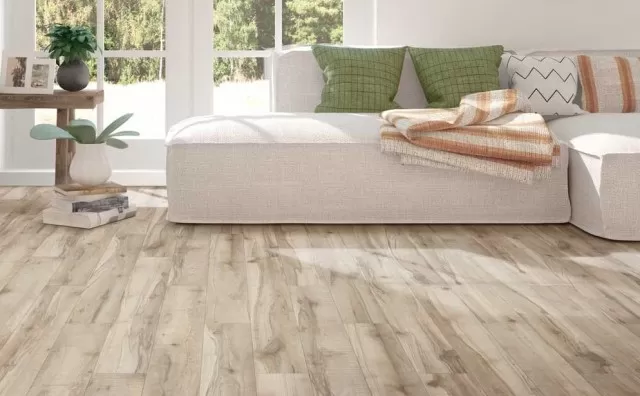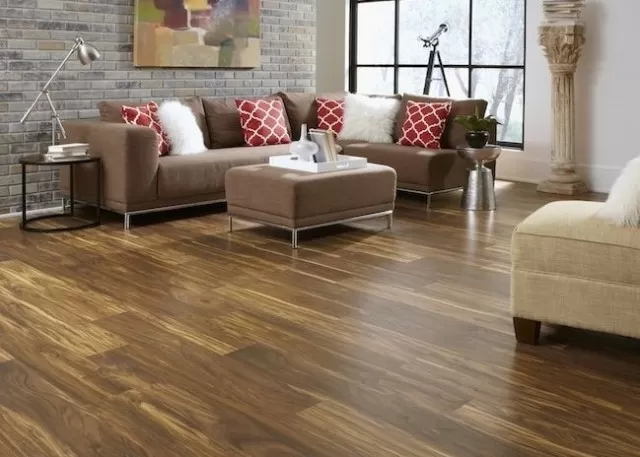If your house has a vinyl, cork, or linoleum floor, you possess resilient floors. These types of floors offer a slight level of softness and flexibility.
These types of floors offer a slight level of softness and flexibility, making them more comfortable to stand on compared to hardwood or ceramic tile floors.
However, they are not as durable. Heavy furniture can leave dents, chairs dragged across the floor can cause surface gouges, and dropping sharp objects may create cuts.
To ensure the protection and maintenance of these floors, it is important to clean them correctly.
Here are the recommended cleaning steps.
Cleaning Vinyl Resilient Floors

To clean vinyl resilient floors and maintain their appearance, start by using a broom, dust mop, or Vacuum Cleaner to remove dust and dirt.
It’s important to control the presence of grit and soil on the surface.
For routine cleaning, a damp mop can be used on vinyl floors.
Choose a nonabrasive all-purpose cleaning product or follow the recommendations of the vinyl manufacturer. Some Cleaning Solutions require rinsing, while others are no-rinse options.
Always check the instructions on the product’s container.
If you’re uncertain about the composition or coating of the floor, consult the previous owner, real estate agent, or rental agent.
If there’s still uncertainty, it’s best to use a mild vinegar-and-water solution for cleaning. Water-based or acrylic-based floor polishes can be used on many resilient floors, but they may not be suitable for no-wax floors.
Dos and Don’ts for Vinyl Floors:
To preserve and maintain vinyl floors, follow these cleaning tips.
Some stains on vinyl floors, especially older ones, may be permanent.
However, you can try lightening the stain with the following techniques. It may require repeating the process several times.
Cleaning Cork Resilient Floors

Cork Flooring provides both cushioning and durability due to its pre-applied finishes.
When cleaning cork floors, focus on cleaning the surface finish. If the cork surface is sealed with polyurethane (which is the case with most cork floors), use water and mild detergent or White Vinegar for cleaning, followed by thorough rinsing.
If the cork is unfinished or waxed, follow the cleaning instructions for polyurethane but apply solid or liquid wax instead. If you prefer a matte finish, avoid using polishes.
It’s always a good idea to check with the cork flooring dealer or manufacturer for specific cleaning recommendations.
In addition to regular cleaning, take sensible precautions to extend the lifespan of your cork floor.
Avoid dropping sharp objects and sliding heavy furniture across the floor. Consider purchasing extra flooring during installation to have replacements for damaged areas in the future.
Although the color may not match initially, it will blend in as it ages.
Cleaning Linoleum Resilient Floors

Linoleum, often mistaken for Vinyl Flooring, has been in use since the early 20th century.
There are notable differences between the two. Vinyl, commonly used as sheet flooring, is made from petroleum-based polyvinyl chloride, offering flexibility and resilience with a semi-soft surface.
Linoleum, on the other hand, is composed of linseed oil, resin, cork, limestone, wood flour, and pigments, rolled onto a jute backing. Linoleum is typically more expensive than regular sheet vinyl due to its long-lasting wear and design possibilities.
To clean linoleum floors, follow the instructions for resilient flooring.
Begin by sweeping the floor, then wash it using detergent or borax mixed with water. Rinse the floor thoroughly and let it dry.
Finish by applying a coat of paste wax or liquid wax, and buff it to achieve a shine.
*The information is for reference only.